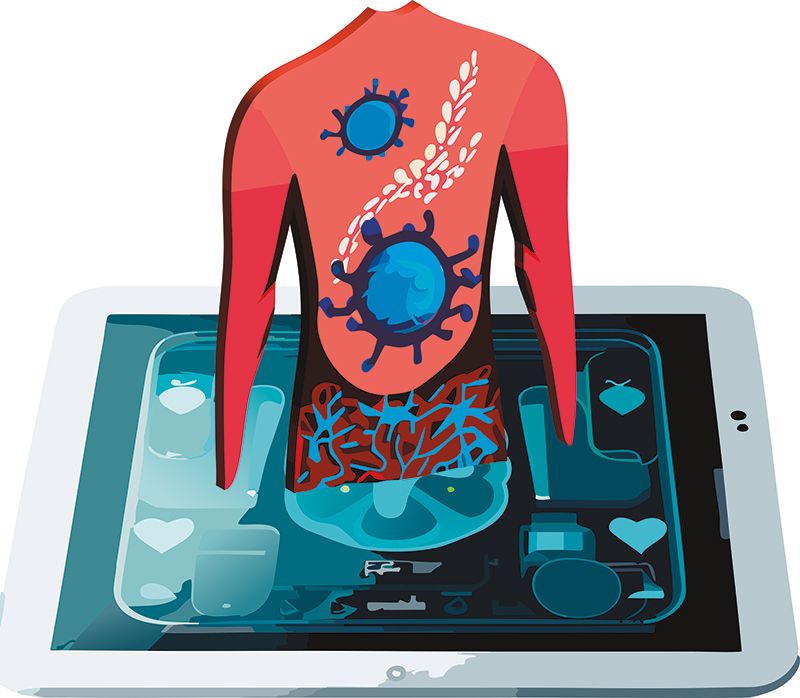AI and ML Show Promises – The Passion for Seamless Cancer Treatment
When we think of AI and ML, we tend to think of ChatGPT, image generators, personal digital assistants, or even robots. The power of AI and ML is much more than that. By definition, artificial intelligence is a computing machine capable of performing tasks that typically require human intelligence.
Branching off AI is ML also known as machine learning which focuses on the use of data and algorithms to imitate the way that humans learn. These technologies have many use cases and I decided to explore what they can do for breast cancer treatment.
Early detection is vital in managing cancer. As stages advance the treatment gets more and more complicated. Currently, an approach to fight cancer lies in surgery, chemotherapy, radiation therapy, immunotherapy, and targeted cell therapies, depending on the type of cancer and the rate at which it spreads. However, some preventive strategies, such as lifestyle modifications and regular screenings, are important to lower the risk of cancer.
The first line of defense is early detection. If caught early, the battle against cancer can be won before it advances to a more serious state. AI and ML can be used to detect cancers earlier. Here is a drill down of how AI and ML can assist in detecting breast cancer.
Starting with image recognition and analysis, AI algorithms can analyze mammograms to identify patterns and anomalies that may be indicative of breast cancer. Furthermore, AI systems can process and interpret imaging data more accurately and efficiently from ultrasound and magnetic resonance imaging (MRI) scans, providing additional insights for diagnosis.
Predictive Modeling can assist in risk assessment for cancer development. Machine learning models can analyze patient data, including family history, genetic information, and lifestyle factors, to assess the risk of developing breast cancer.
AI-enabled Automated Histopathology can assist pathologists in analyzing tissue samples by automating the identification and classification of abnormal cells in biopsy slides.
Analyzing electronic health records by integrating data from various sources, including patient records, imaging results, and genetic information, allows machine learning algorithms to identify patterns that may be indicative of breast cancer or its risk factors.
Continuous monitoring by AI systems can help track changes in breast tissue over time. This aids in the early detection of abnormalities or tracking the progress of treatment.
Machine learning algorithms can perform Genomic analysis and profiling by analyzing genomic data to identify specific genetic markers associated with breast cancer.
When it comes to our lives and treatment of the likes of breast cancer, AI and ML technologies may provide numerous benefits. For starters, AI and ML can enhance the accuracy of breast cancer detection, enabling earlier diagnosis and intervention, which is critical for improved treatment outcomes. These technologies facilitate personalized treatment plans by analyzing individual patient data, leading to more targeted and effective therapies tailored to the specific characteristics of the cancer. Finally, automated analysis of medical imaging and patient records by AI systems can significantly speed up the diagnostic process, allowing healthcare professionals to make timely decisions.
With every technology out there, some risks and factors may work against the greater good. The implementation of AI and ML in cancer treatment may increase dependency on such technologies. Excessive dependence on AI may lead to misjudgment among healthcare workers who can potentially overlook machine errors. Like with every AI model, the risk of data bias may introduce biases that can result in less accurate predictions for certain demographics, potentially leading to disparities in healthcare outcomes.
![]()
From a cost perspective, the patient risks giving up their privacy. The use of large datasets in AI applications raises concerns about patient privacy and the security of sensitive health information. Initial setup costs for integrating AI systems into healthcare practices can be significant, and implementing these technologies seamlessly may pose logistical challenges.
I am not an expert, but I am passionate about this topic and this article aims to shed light on the illness and explore the relationship between technology and healthcare. With the surge of AI and ML applications throughout various industries, we can see cancer treatment becoming more seamless soon. Cancer can cause stress, discomfort, pain, and weakness but there are ways to prevent the risk altogether. As my dad says, your body is like a car, if you put in bad-quality gas it will eventually break down. Start thinking about what goes into your body and how active your lifestyle is.


